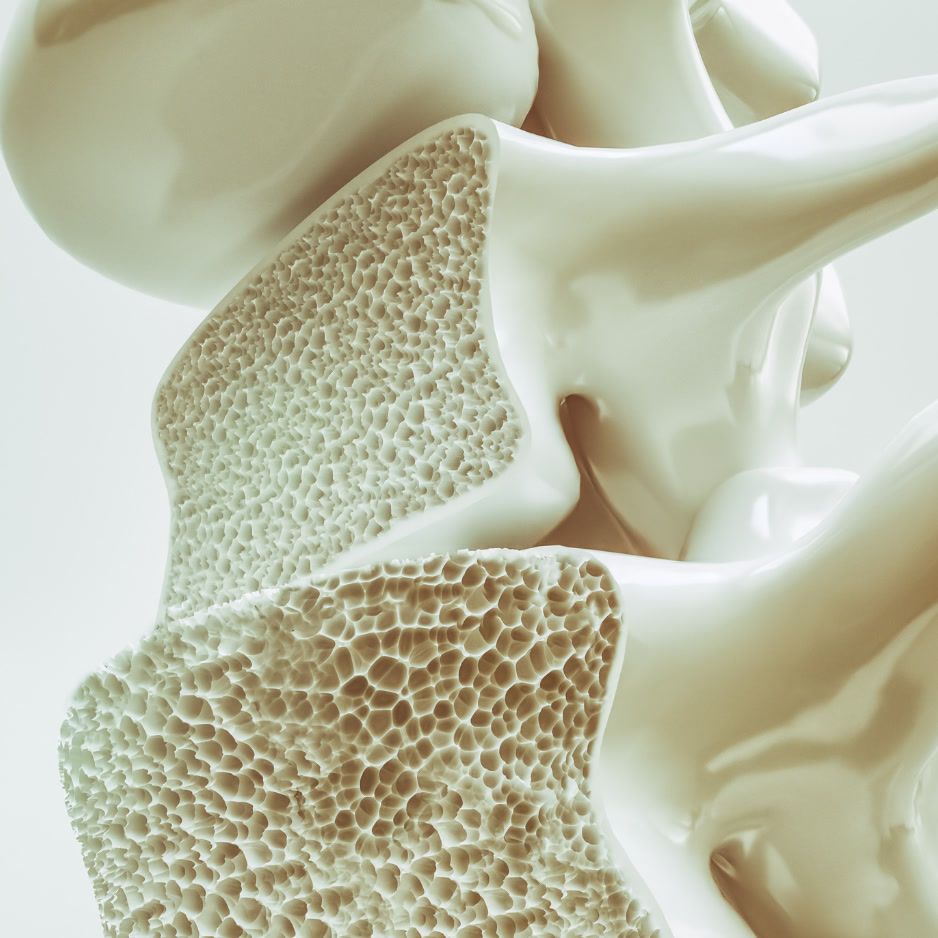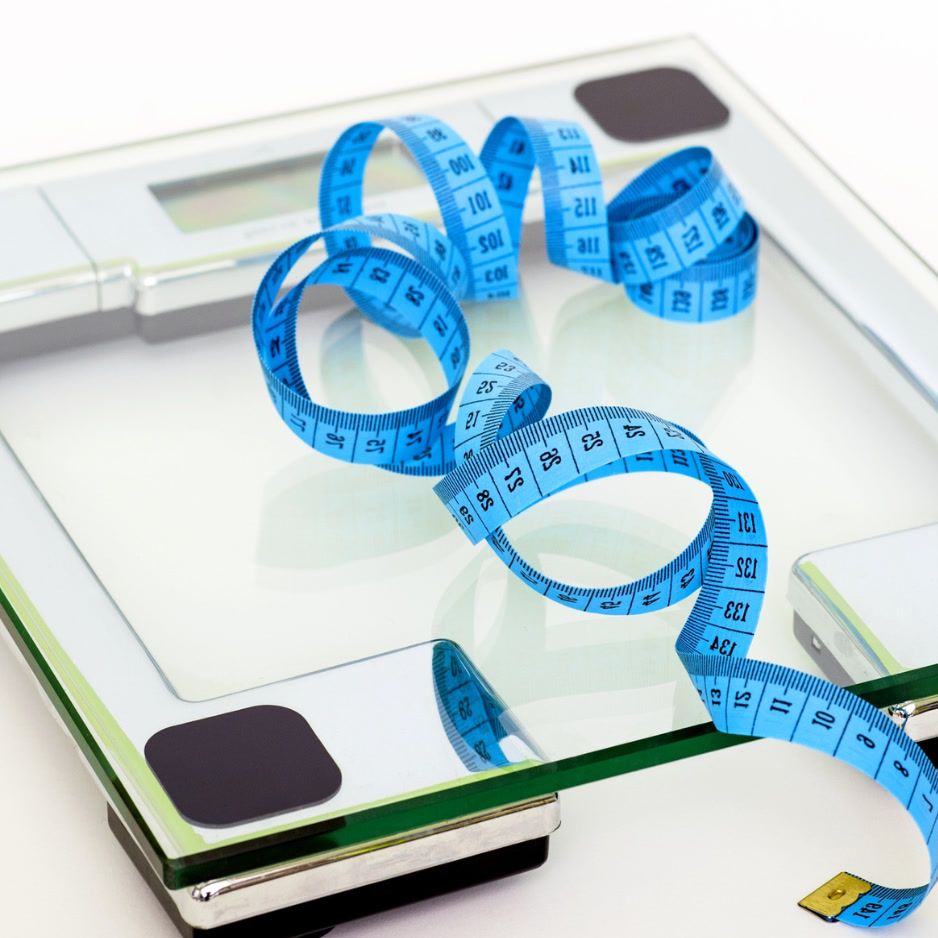Fall Prevention Exercises to Improve Balance and Strength
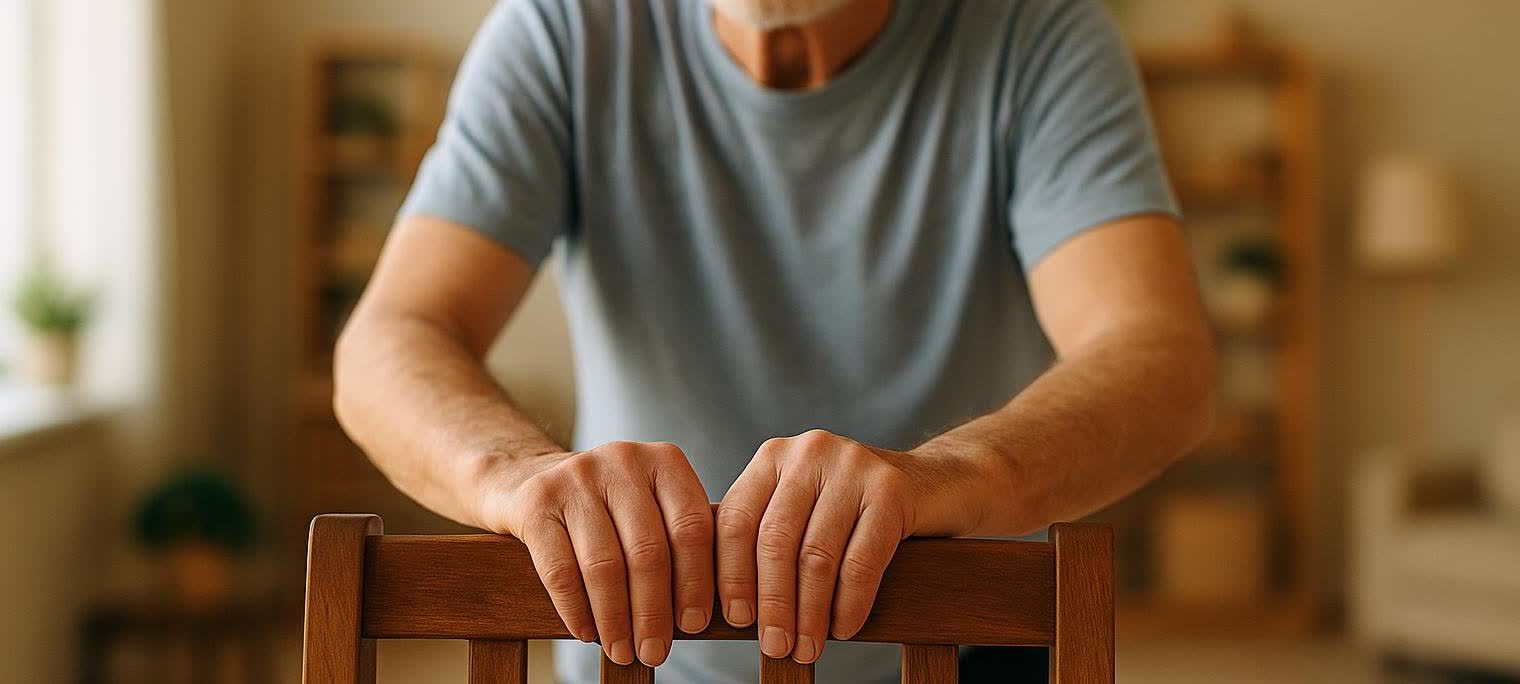
Fall Prevention Exercises to Improve Balance & Strength
Looking for the best fall prevention exercises you can do at home? Here’s the quick answer: a simple 10–20 minute routine, 3 days a week, that builds leg strength and balance is your most reliable, research‑backed way to lower fall risk. You’ll find step‑by‑step moves—organized by level—below, plus safety tips and progress checks (see sources from the CDC, USPSTF, and a major Cochrane review).
If you or a loved one wants to stay independent and avoid falls, you’re not alone. More than one in four adults 65+ falls each year, and falling once doubles the chance of falling again (CDC). The good news: a few targeted exercises—done consistently—can meaningfully reduce risk.
This guide is for education only. Talk with your clinician or physical therapist before starting—especially if you’ve fallen recently, feel unsteady, or have heart, neurological, or orthopedic conditions.
Find Your Level: 60-Second Self-Check
Try these with a counter nearby:
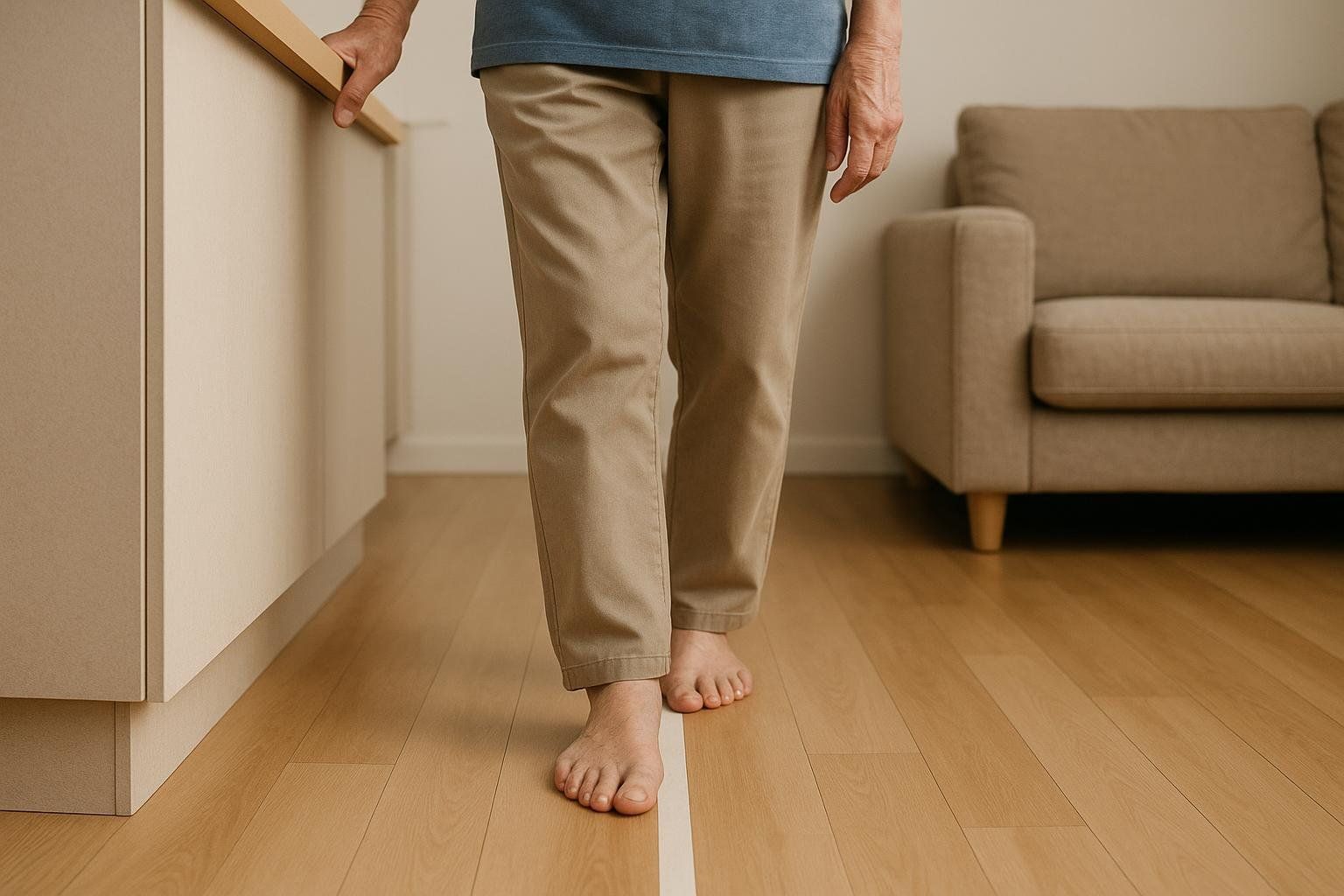
- Can you stand on one leg (eyes open) for 30 seconds without touching down?
- Can you walk 10 heel‑to‑toe steps in a straight line without wobbling?
- Can you perform 5 Sit‑to‑Stands without using your hands?
How to pick your level: If any are tough, start at Level 1. If all feel easy, try Level 2 or 3. This mirrors tiered programs like the NHS Inform strength and balance routine (NHS Inform).
How Often Should You Train?
- Aim for balance + strength at least 3 days/week; short daily practice is even better (USPSTF).
- Walking is great for your heart, but it’s not enough by itself to strengthen the legs for fall prevention—combine it with the exercises below. Adding hills or stairs boosts leg strength further (NCOA).

Safety First
- Clear your space: remove clutter, cords, and loose rugs; turn on good lighting. Home hazards are a big, fixable risk factor (CDC).
- Use support: practice near a counter or sturdy chair.
- Move slowly: no sudden head turns if you get dizzy. Breathe normally.
- Stop if needed: sharp pain, chest pain, or severe dizziness = pause and call your clinician.
- Medication check: taking 5+ medications? Ask your clinician to review them—polypharmacy increases fall risk (Hopkins Medicine).
The Tiered Fall Prevention Exercises Program
Level 1: Build Confidence and Control (Beginner)
Do 2–3 days/week. Hold a counter/chair as needed.
-
Sit‑to‑Stand from Chair: 2–3 sets of 8–10 reps
Sit tall on the front of a sturdy chair, feet flat. Lean slightly forward and stand up without using your hands if possible; control the sit‑down. -
Heel Raises: 2–3 sets of 10–15 reps
Stand tall holding the counter; rise onto the balls of your feet, pause, then lower slowly. -
Toe Raises: 2 sets of 10–12 reps
With heels planted and hands lightly on the counter, lift your toes toward your shins. -
Tandem Stance Holds: 2–3 sets of 20–30 seconds/side
Stand heel‑to‑toe near the counter; posture tall, eyes ahead; light fingertip touch as needed. -
Side Stepping (hands on counter): 2–3 passes
Facing the counter, take 10 slow steps to the right, then 10 to the left to complete one pass. Do 2–3 passes. -
Backward Walking (light support): 2 passes
With one hand on the counter for balance, take 10 small, controlled steps backward to complete one pass. Do 2 passes.
Progress to Level 2 once you can complete all reps with minimal hand support on two separate days. These movements align with foundational drills recommended by NHS Inform and Hopkins Medicine. For more options, see our balance exercises for every level.
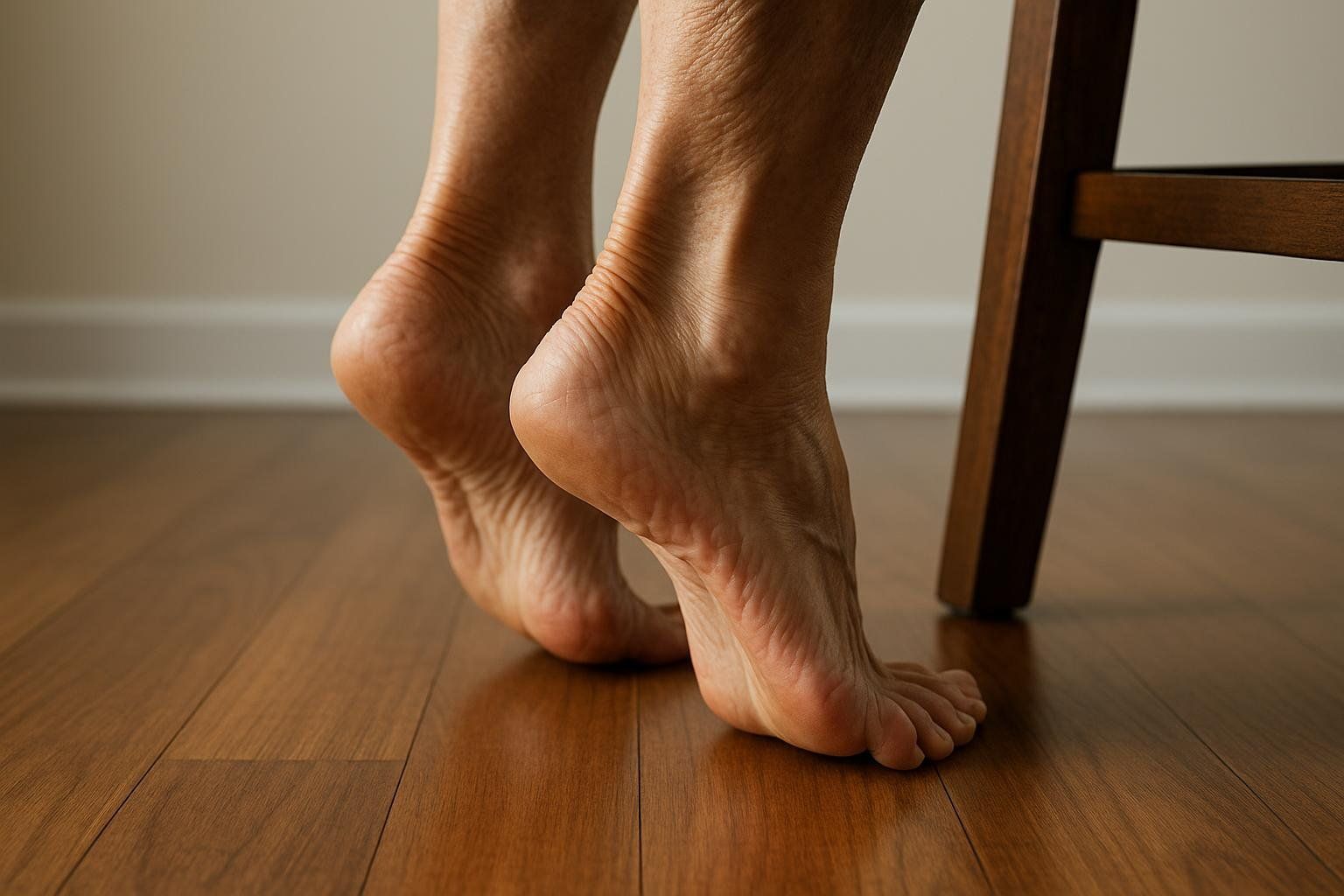
Level 2: Strength + Dynamic Balance (Intermediate)
Do 3 days/week on non‑consecutive days.
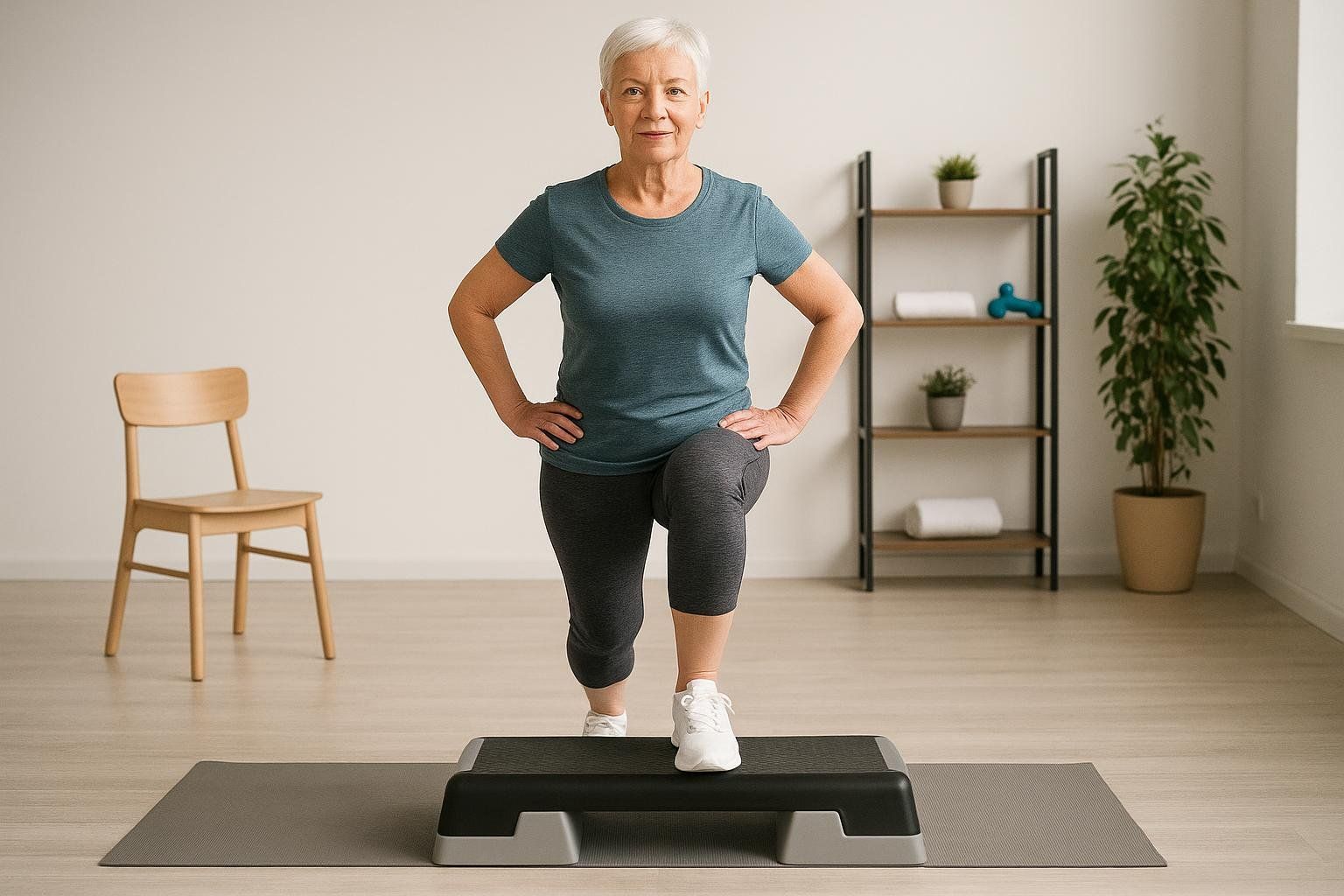
-
Chair Squat (tap and stand): 3 sets of 8–12 reps
Stand in front of a chair, feet hip‑width. Push hips back, lightly tap the seat, then stand tall. -
Step‑Ups (6–8" step, support as needed): 3 sets of 8 reps/leg
Whole foot on the step; press through the heel to rise; step down with control. -
Standing Hip Abduction (band optional): 2–3 sets of 10 reps/leg
Hold the counter. Move one leg out to the side without leaning your torso. -
Heel‑Toe Walk along the counter: 3 passes
Walk a straight line for 10–20 heel‑to‑toe steps; light touch as needed; eyes forward. -
Single‑Leg Balance: 3 sets of 20–30 seconds/leg
Stand on one leg with a soft knee; hips level; fingertip support if needed. -
Clock Reaches: 2 rounds/leg
Stand on one leg and tap the other foot to “12, 3, and 6 o’clock.” Keep torso upright.
Add an easy walk on off‑days. Combining balance and functional training with strength delivers the best results—an approach shown to reduce falls in community‑dwelling older adults (Cochrane review). If your ankles feel wobbly, layer in this step‑by‑step ankle strengthening routine. Strength work also supports bone health; here’s a strength training plan for bone density.
Level 3: Advanced Balance and Control (Advanced)
Do 3 days/week.

-
Lateral Step‑Downs (4–6"): 3 sets of 8 reps/leg
Stand sideways on a step. Lower your free heel toward the floor by bending the stance knee; press back up. -
Split‑Stance or Walking Lunges (support as needed): 3 sets of 6–10 reps/leg
Step into a long stance; lower both knees to ~90°; push through the front heel to return (or keep walking). -
Single‑Leg Romanian Deadlift (light support): 3 sets of 6–8 reps/leg
Hinge at the hips on one leg as the other leg reaches back; spine long; shoulders square. -
Heel‑Toe Walk with Head Turns (slow): 3 passes
Walk 10–20 heel‑to‑toe steps while slowly turning your head left and right every 2–3 steps. -
Eyes‑Closed Balance (near counter): 2 sets of 15–20 seconds/leg
Only if steady with eyes open. Keep a fingertip ready and open eyes immediately if unsteady.

Optional add‑on: Tai Chi 2–3×/week. A 2023 meta‑analysis found Tai Chi reduces the number of fallers and improves balance tests like TUG and functional reach.
Evidence Snapshot (Why This Works)
- A Cochrane review found high‑certainty evidence that exercise programs reduce the rate of falls by about 23% in older adults living in the community, especially with balance/functional and multi‑component programs.
- The USPSTF gives a Grade B recommendation to offer exercise interventions to older adults at increased fall risk.
Home Setup & Progress Tracking
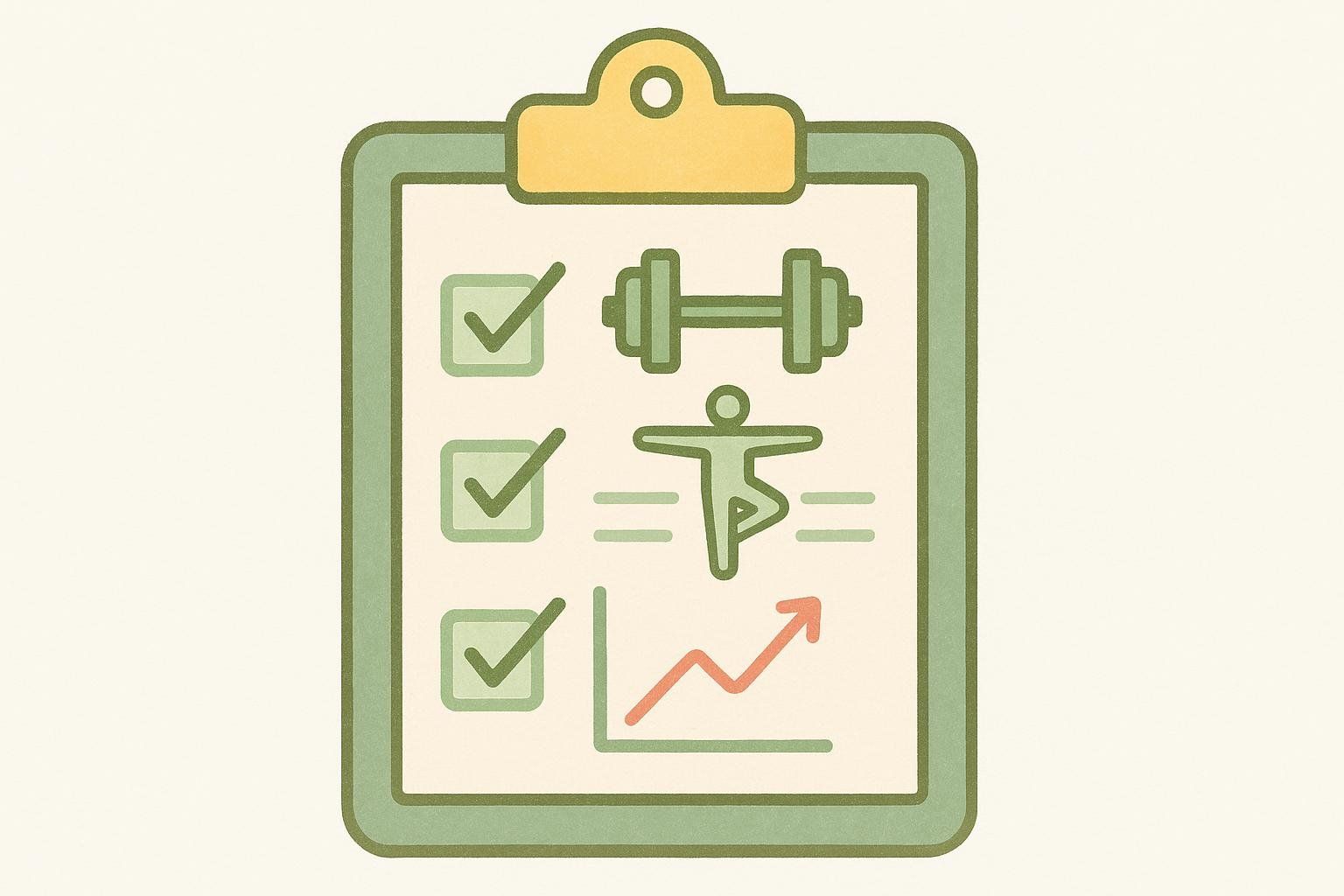
- Safety checklist: good lighting, non‑slip shoes, remove clutter, add night lights, install grab bars (bathroom, stairs). Many falls happen at night during bathroom trips (CDC).
- Log your routine: track exercises, reps/holds, and a 1–10 confidence score. Re‑test the 60‑second self‑check every 4–6 weeks.
- Simple performance checks: time a 10‑meter walk, track single‑leg balance hold, and count Sit‑to‑Stands in 30 seconds.
When to See a Professional
- You’ve had two or more falls in the past year, or a fall with injury.
- You feel unsteady, have new dizziness, or can’t progress beyond Level 1 after 3–4 weeks.
- You take multiple medications, recently changed meds, or have vision/foot pain issues.
- A physical therapist can tailor exercises and assistive devices to your needs (NCOA guidance). If you’re also curious about bone health, our guide explains when a diagnostic bone density test is recommended and how to use the FRAX tool step‑by‑step to estimate 10‑year fracture risk.
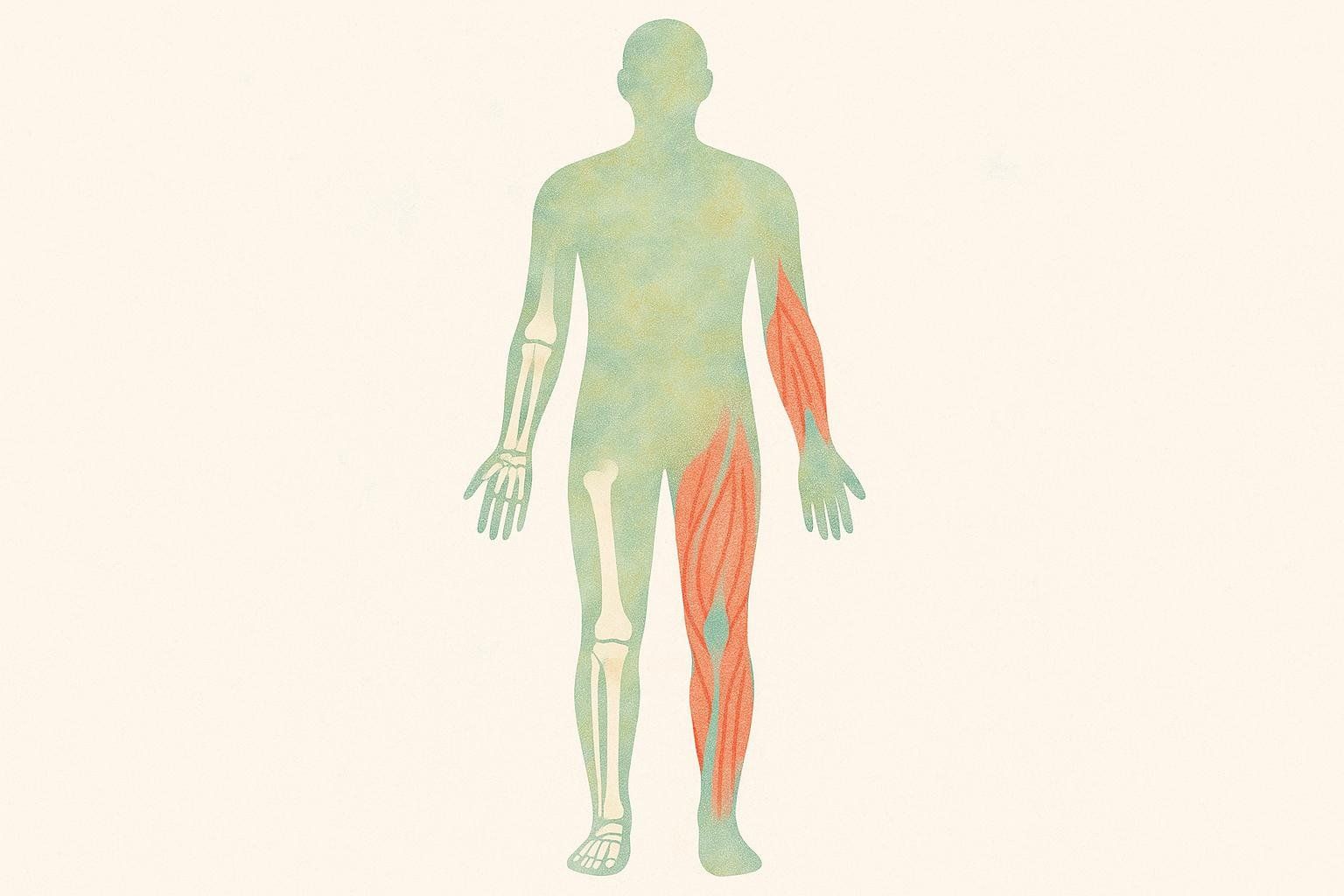
How a DEXA Scan Supports Fall Prevention
Reducing fall risk is half the story. Reducing injury if a fall happens matters too. A BodySpec whole‑body DEXA scan (non‑diagnostic) gives you clear numbers you can act on. It provides bone density measurements you can share with your clinician, leg‑by‑leg lean mass to spot muscle imbalances in hip and ankle stabilizers, and visceral and total body fat to inform mobility and overall health conversations. Learn more about DEXA scan benefits for bone health and body composition. Use these insights to personalize training and decide on next steps with your clinician.
Ready to get personalized data? Book your DEXA scan in minutes.
Key Takeaways
- Do a quick safety sweep first: clear clutter, improve lighting, and use a counter or chair for support.
- Start at your level and practice 10–20 minutes most days; progress when reps feel steady with minimal support.
- Know when to get help: new dizziness, two or more falls in a year, or stalled progress are reasons to see a clinician or PT.

